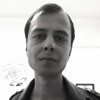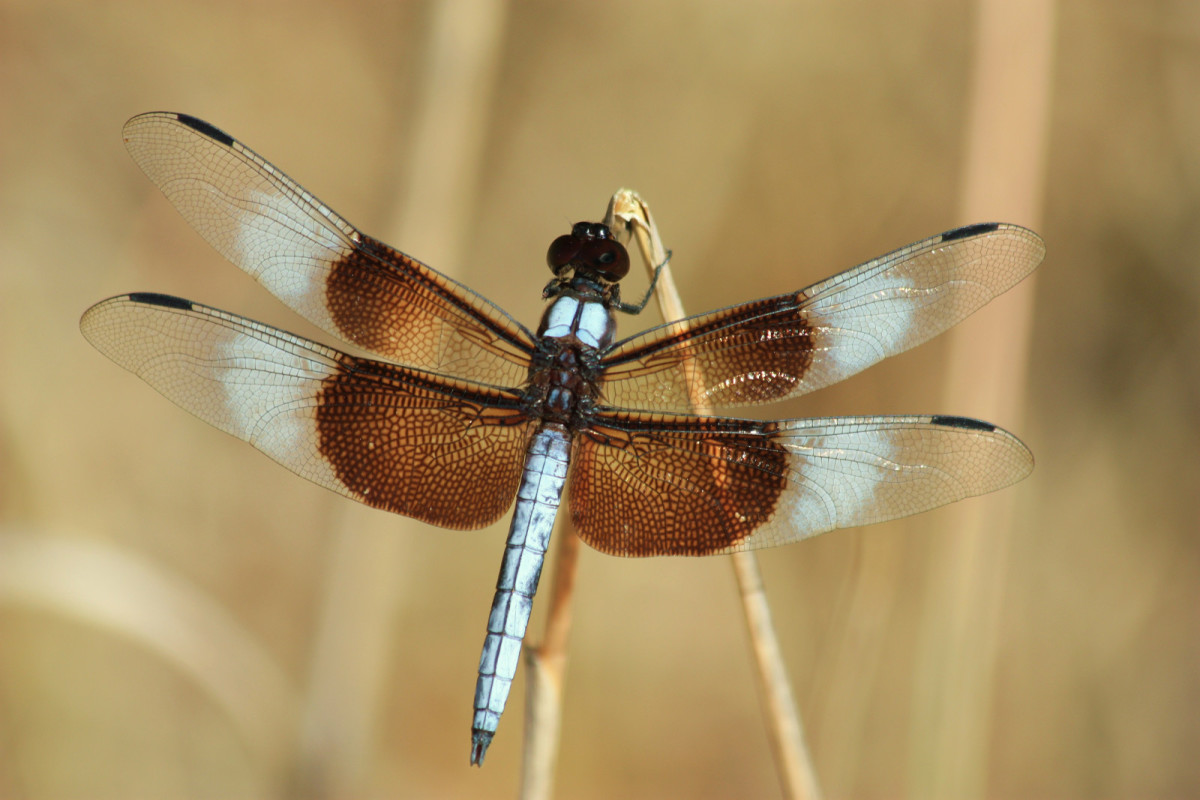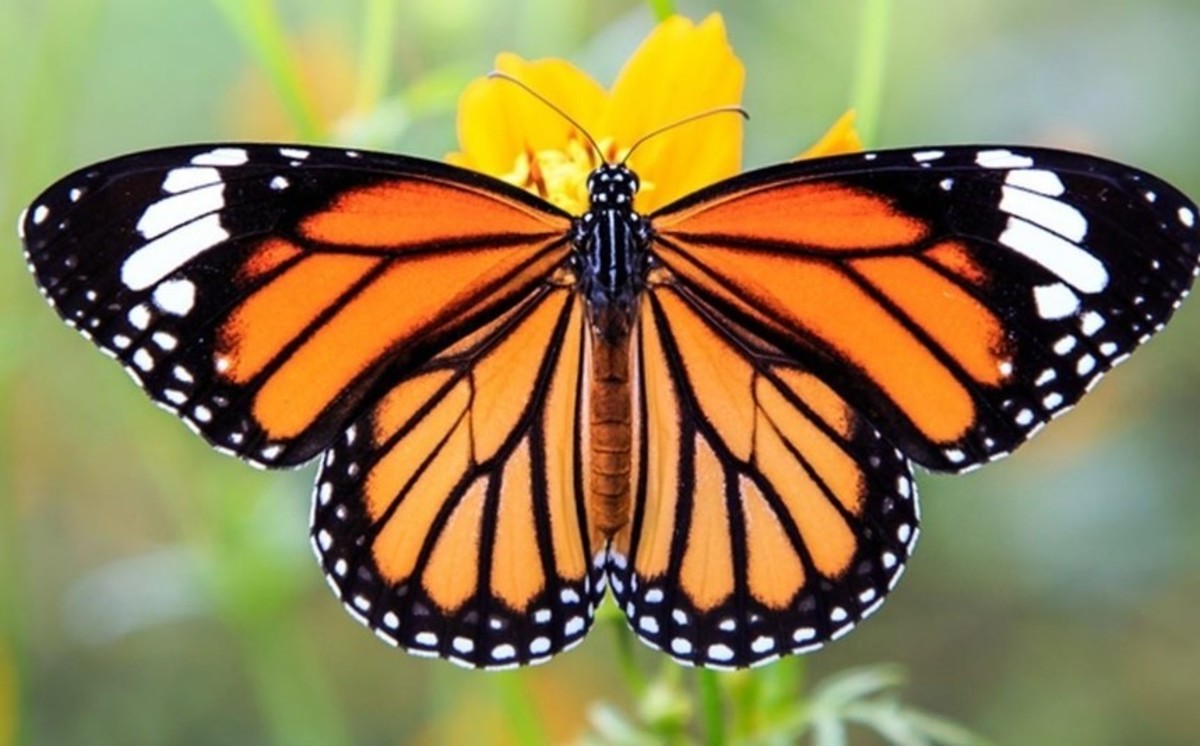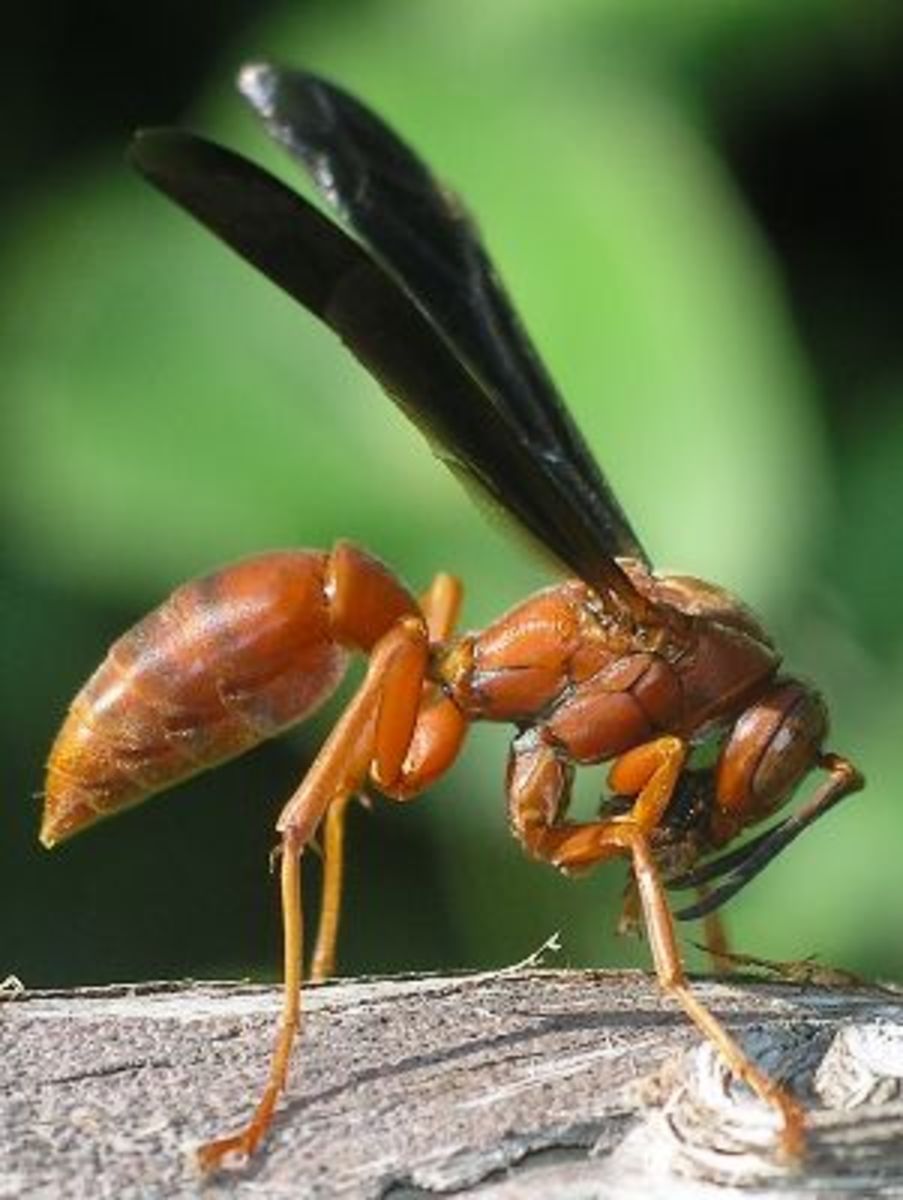- HubPages»
- Education and Science»
- Life Sciences»
- Entomology
The Difference Between The Damselfly & Dragonfly
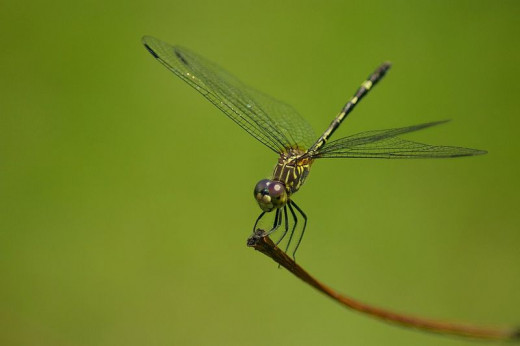

Damselfly Vs Dragonfly
Damselflies and dragonflies belong to the order Odonata, and in that particular order, there are over 5,000 species and around 30 family groups. The damselflies are represented in the order Odonata by a selection of families, especially from the Calopterygidae to the Pseudostigmatidae. For the dragonflies, their family group follows from the Aeshnidae to the Libellulidae. Sometimes these scientific words are so awkward to pronounce, but checking it up on an online dictionary may guide you to the syllables to pronounce it correctly.
In general, the head of these insects has biting mouth parts, their antennae is short, and they have large bulging eyes. The damselflies head is broad, and their eyes are widely spaced out, whereas the dragonflies have rounded heads and eyes that are not spaced out widely like the damselflies. The wings of both these insects which they possess are more or less identical, whereas the hind-wings of dragonflies are broader than the fore-wings. When the damselflies are resting, they fold their wings, and the dragonflies tend to hold them outstretched. Another feature of the damselflies is they sit and wait for their prey most of the time, and on the other hand the dragonflies usually hunt their prey in flight.
The males of both these insects can curl their abdomen to transfer sperm from the opening of their genitals on the ninth abdominal segment, and to a storage organ in the second or third abdominal segment. When they're mating, the males may remove sperm from matings in the past. Their eggs are found in water or on aquatic plants where they lay them. Metamorphosis is not complete. The aquatic nymphs are predacious and have a hinged labium that can be shot forward to grab prey.
Rubyspot Damselfly (Hetaerina cruentata)
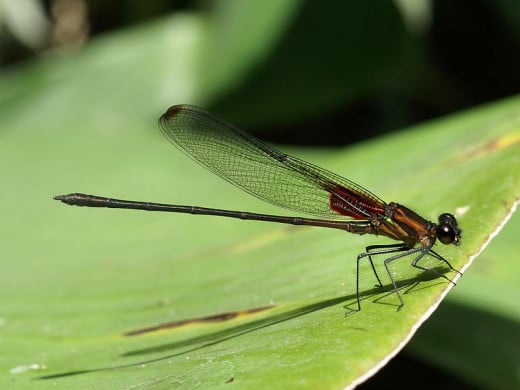
The Broad-Winged Damselflies
The picture above is of a rubyspot damselfly taken in Costa Rica. There are over a hundred different species like this and they belong to the family Calopterygidae. These relatively large damselflies possess wings that narrow gradually and they look to be unstalked. The wings may be dark and in the male species, they can have bright red marks at the bases or visible dark marks somewhere else in the body. The pterostigma (distinctive and dark pigmented spot at the front edge of the wings) is small or may be absent altogether. Their wingspan ranges from 5-8 centimetres and their body length is typically around 4-5 millimetres, but the females length is shorter than the males.
These species lay their eggs inside the tissues of various plants of the aquatic type. A single female damselfly of the broad-winged type may lay up to 300 eggs, and she may get in the water fully to lay those eggs. In fast-flowing water, the nymphs can hunt for prey. Besides the rubyspot damselfly, these broad-winged species of many types can be found all over the world, especially in the hot regions, but it's very rare in Australia. They can mainly be seen in fast and slow flowing rivers and streams, and sometimes around canals. Some broad-winged adult species may hunt some distance from the waters and instead prefer the wooded areas, but it depends on the region they are in.
Club-tailed Dragonfly (Gomphus vulgatissimus)

Club-tailed dragonflies
The club-tailed dragonfly above (Gomphus vulgatissimus) is also known as the European Club-tailed Dragonfly.This type is mostly found in the northern and central parts of Europe, especially in Britain. There are over 900 different species of them and they all belong to the family Gomphidae.The common name of these relatively large dragonflies refers to the bizarre and unusual shaped abdomen of the male species, and sometimes of the females too. The abdomen is swollen just before its apex, which gives it the club-like appearance.They have a wingspan of 50-64 millimetres and a length between 50-80 millimetrss, but it depends on the type of specie. Club-tailed dragonflies have widely separated eyes, and most species are brightly coloured in differing combinations of black, yellow and green.
The mating takes place among vegetation. Their eggs are laid in shallow water, with the female lashing the surface with the end of the abdomen in order to release the eggs. The nymphs live at the bottom, and crawling and burrowing to seze their prey. Besides Europe, the club-tailed dragonflies are found worldwide. They are usually in ponds, rivers, lakes and streams.
Damselfly
Other types of common species
There are thousands of damselflies and dragonflies around the world in the order Odonata. The most common and popular ones are listed below:
- Narrow-Winged Damselflies - Family of the Coenagrionidae
- Stalk-Winged Damselflies - Family of the Lestidae
- Giant Damselflies - Family of the Pseudostigmatidae
- Darners (dragonflies) - Family of the Aeshnidae
- Biddies (dragonflies) - Family of the Cordulegastridae
- Green-Eyed Skimmers (dragonflies)- Family of the Corduliidae
- Common Skimmers (dragonflies) - Family of the Libellulidae
